Opinion
Development Planning in Gilgit-Baltistan – The Missing Link {A reflection}
Published
2 years agoon
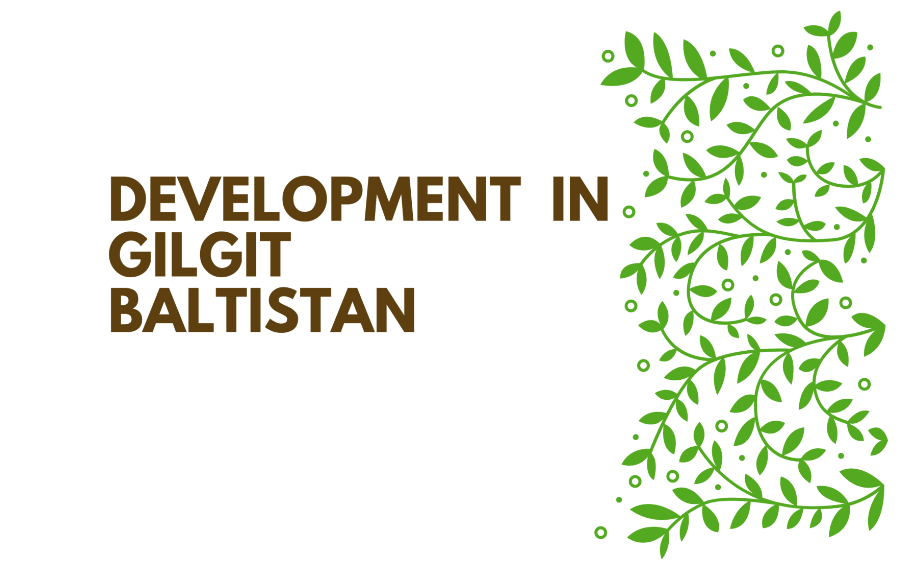
Mr. Sajjad Hyder, Chief Economist, Planning & Development department has recently retired from his service after serving almost three decades, commencing from April 1993 to November 30, 2022. He, as Chief Economist, was responsible for leading public Investment management policies for designing and implementing various socioeconomic development projects and programs in the region. Moreover, concoction of substantive policies for socioeconomic development in all sections was also part of his job responsibilities.
The retired officer, Mr. Sajjad Hyder, has shared the following reflection, regarding public investment management in GB, which is based on his 30 years of exposure as a development planning practitioner:
Development Planning in Gilgit-Baltistan – Missing Link
Historical background: The development economics was born immediately after the second world war with the birth of the Breton Woods international financial system to facilitate development and eradicate poverty in the countries that were emerging out of colonialism. The Planning commission Pakistan was formally established in 1953 with the Harvard Advisory Group (HAG) officially became its coach soon after. Based on their methodology, the country introduced formal 5-year planning in 1955 which with periodic interregnums continues until today. In Gilgit-Baltistan, development planning starts with the inception of 2nd Five Year plan by establishing a Planning Cell in 1971.
It is not out of place here to say that most of the project cycle management components in GB have fallen into misuse, while others have developed serious defects. Following are the major gaps, in my observation over last 30 years with the department:
REASONS OF INEFFICIENCY IN DEVELOPMENT PLANNING IN GILGIT-BALTISTAN:
As indicated earlier, Public Investment Management in Gilgit Baltistan starts from 2nd five-year plan. This system served well the needs of this region in
early stages as the planning & development department was an empowered organization headed by a development commissioner in BS 20. Over time, however, the system developed several problems due to degradation of the organization in view of successive political developments in the region. Presently, Gilgit-Baltistan’s PIM system (development planning) is mere shadow of the concept given by the Harvard Advisory Group, meaning, in capacity, influence and effectiveness.
To understand the sources of inefficiency, it is necessary to review all the stages in the public investment process to identifying gaps and weak points in the processes and procedures.
Guidance and Screening: Identification and screening components of PIM are badly compromised due to atrophy of economic planning in Gilgit-Baltistan. Three broad factors were mainly responsible for the waning performance of the PIM system in GB:
1) Rigidities of the PIM system: The structure of the economy changed from a public sector led to a private sector led economy. This structural changed called for a different role of the planning system, in general, and particularly, the role of P&DD. This required different skills and competencies than what are available with the department. 2) Dominance of crisis management over economic management: As projects started to slow down due to economic policy and planning adopted in firefighting mode. Longer term planning as well as public investment became casualties of the crisis mode which has preoccupied the GB Government for the last several years.
3) A sharp decline in the capacity of the PIM system in GB: With no medium-term plan or strategy available to define the sectoral and sub-sectoral priorities of the government, the project identification process became largely ad-hoc, with identified projects reflecting more the priorities of political leadership than those established through a well thought out plan. The void left by abandonment of the planning process is largely filled by the politicians, where a large number of projects are identified by politicians, or by the line-departments on directives of the politicians.
Ironically, the Planning Commission manual, provides ample guidance for identification, appraisal, and implementation of various programs / projects but of no use in GB.
Project Preparation and Appraisal: In the beginning, the quality of project preparation and appraisal was quite satisfactory. However, over time, these functions weakened, mainly due to following reasons:
- With mounting fiscal difficulties, the line departments faced an increasing
squeeze on their operational (recurrent) budget. Inclusion of a project into
the ADP therefore became a mode of getting additional fiscal resources
for the line departments, from which it can finance some of operational
needs left unmet by inadequate recurrent budget. There was therefore a
big enough incentive for the line departments to get as many as possible
projects into the ADP as soon as possible. This forced them to cut
corners on project preparation and pull all strings and levers to get project
approved. {Roughly, only 3 percent of development expenditure goes to create or acquire physical assets, whereas 31 percent is spent on operation expenditure}. - Political intervention in the development process increased adversely
affecting the quality of project preparation and the moral of
development-related staff in the departments and P&DD. There never has been any tradition in GB of undertaking ex ante or ex-post independent reviews of the preparation and appraisal process even for important projects. - “Games” in the project preparations and approval processes: Limited capacity of the P&DD to properly appraise projects has given rise to some “gaming” behavior within the line departments to get whatever they want from the project approving authorities by deliberately include unwanted expenditure items (e.g. a large number of vehicles) in the project design just to distract the P&DD’s appraisal team to focus on these items, leading to a less than required focus on other areas and costs of the project. {The end result is leading to implementation delays, changes in scope and design of the project, cost overruns and consequently loss in benefits from the projects}.
- Project Selection and Budgeting: Once a project is included in ADP in principle, administrative and political wheels start moving to get the project approved, irrespective of whether funds for the project are available or not, and it is technically viable or otherwise. This leads to a number of projects making into the ADP with insufficient (at time a “token” allocation). This allocation is usually not even enough to pay for the
salaries of the project staff. Moreover, this also leads to thin spreading
of resources across other projects. As such, many projects get under-financed, which causes implementation delays, and a large throw-forward. A large throw-forward leaves little room for the incoming new government to implement its development agenda with full vigor. This has created a number of implementation issues undermining the efficiency of public investment.
Project Implementation: Project Implementation has been a weak area in GB. For ADP projects, shortcomings in project identification, preparation, appraisal, and approval processes make implementation very difficult. In addition, projects are usually managed by staff taken form regular cadres of government, with limited project management skills.
At times project management is assigned as an “additional responsibility” along with the person’s normal work. Moreover, procedures governing project financing, procurement and contracting are overly cumbersome. Hence, implementation delays and the consequent cost escalations are a norm rather than an exception for ADP.
Public Procurements: Weak procurement practices remain one of the major reasons for inefficiencies in public expenditure, including public investments as procurement is a highly technical subject. In addition, the volume of public procurements is huge, both in size and number. There are not enough skilled procurement specialists within the GB Government to manage all these procurements. Moreover, weak accountability and defective bidding and contract documents have given rise to corrupt contracting procedures and practices which directly undermine the efficiency of public expenditure in general, and particularly public investment.
Monitoring & Evaluation: Despite being a function mandated to both the line departments and the P&DD, project monitoring requires considerable improvements. To date, most of monitoring that is undertaken relates to inputs and compliance with procedures and processes, output and impact monitoring continues to be considered as outside the purview and mandate.
Project Completion and Service Delivery: Although procedures for completing a project and soliciting operational resources are well laid out, yet they are hardly ever followed. Project completion report (PC-IV) is filed only in cases where the project requires recurrent expenditure allocation to be operational. Following are the reasons for inadequate allocation of operational budget to a newly completed project:
i) Weak estimates of operational resources: While preparing the PC-I, the line
departments deliberately understate the recurrent expenditure implications of
the project. This is done to improve the chances of getting the project
approved and included in the development budget. The finance authority
takes these estimates very seriously when making operational allocation after
completion of the project.
ii) Implementation delays not only lead to escalation in project cost, but also in recurrent expenditure required to make the project operational.
iii) Inadequacy of R&M allocations lead to deterioration in quality of service
delivered by the projects, reducing value for money under projects.
Missing Links in Functioning of Planning & Development Department: P&DD GB has thus become a project approval body where most of the projects are not identified based on technical considerations or as part of a shared approach to maximizing growth and welfare. These developments adversely impacted the value for money under development.
At all stages of the project, P&DD is supposed to keep track of performance. However, this tracking is now not happening to maximize project performance. At the project initiation, the PC1 form requires a full cost-benefit and economic analysis of the project to be presented to the approving bodies, after scrutiny by the sections.
When the project is complete the sponsoring agency must send a completion report, the PC4. Seldom is this report completed and hence there is little evaluation of the work done and its proper costing. After 5 years of the completion of the project, an evaluation report, PC5, reports on the performance of the project comparing it to the stated expectations set out in the PC1. Once again, these reports are seldom if ever completed. Altogether, role of P&DD is to approve projects and maintaining expenditure management afterwards.
Too Many Projects, Too Little Return
The technical details of policy and projects such as basis of evidence, cost-benefit,
rates of return and rigorous feasibility or sensitivity analysis have gradually been
withdrawn from senior policymaking forums. Looking strictly at the project
development and management system, several weaknesses have crept into the system, lowering their impact and rate of return.
These are:
1) Projects are approved without due diligence. Feasibilities, cost-benefit analysis, spatial determination, and several other details are often subject to political or other considerations. Approvals are pushed through with executive fiat.
2) Projects frequently have large cost overruns. Using a selection of ADP projects overruns are frequent and quite large. This is a combination of poor project management, infrequent delays leading to cost escalation as well as poor initial preparation.
3) Excessive focus on brick and mortar. The bulk of the investment is in hard infrastructure such and link roads are the biggest components. Even in the social sectors and other sectors, departments are interested in brick and mortar and even the approval process favors that.
(To be continued by highlighting proposals for improvement)
Mr. Sajjad Hyder joined P&DD, as Research Officer (BS-17), in 1993 and worked in all the sectors of economy, undertaking research studies and region’s policy development initiatives for socioeconomic development. Main research studies include: Northern Areas Strategy for Sustainable Development, in collaboration with IUC Pakistan, Norther Ares Report on Participatory Poverty Assessment in collaboration with planning commission Pakistan, and Gilgit Baltistan Economic Report {Broadening the Transformation}, a joint venture with ADB and world bank. His contribution in major project interventions include Pakistan Social Action Program, under which significant impact was seen in primary education, primary health care and rural water supply and sanitation in this region. Altogether, Mr. Sajjad Hyder, as young officer {that time}, had acted a leading role in SAP interventions as a catalyst.
In the years ahead, Mr. Sajjad Hyder, was elevated to the positions of Assistant Chief (BS-18), Deputy Chief (BS -19), and Chief Economist (BS-20), having commendable contribution (s) in the socioeconomic development of Gilgit=Baltistan.
About Author
Sajjad Hayder
The writer was the Chief Economist, Planning and Development Department, Government of Gilgit-Baltistan, who recently retired from his service after serving almost three decades. He, as Chief Economist, was responsible for leading public investment management policies for designing and implementing various socioeconomic development projects and programs in the region.
You may like
-
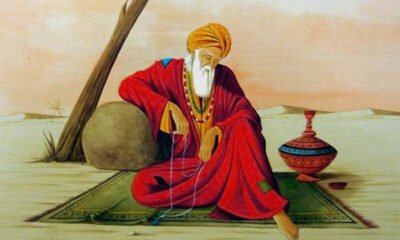

Rumi, the Moral Psychologist
-


Poor Winter Maintenance of KKH Risks CPEC All-Weather Trade
-
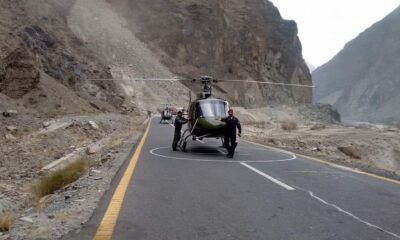

Pakistan Army Launches Rescue Operation, Missing Passengers in Deosai Found Safe
-
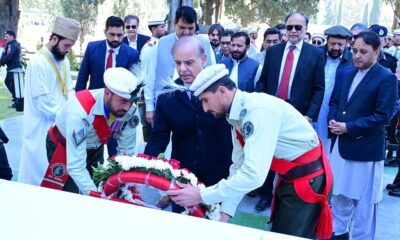

PM Shehbaz Sharif Visits Gilgit-Baltistan, Honors Martyrs, and Launches Development Projects
-
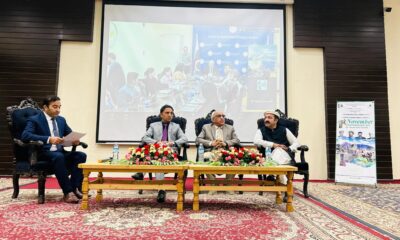

CISS-KIU Seminar: A Tribute to Gilgit-Baltistan’s Freedom Fighters of 1947
-
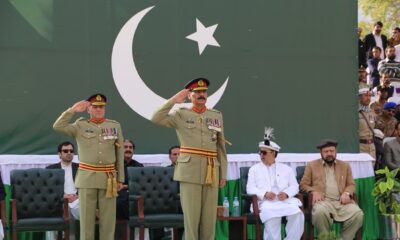

Gilgit-Baltistan Marks 77th Liberation Day from Dogra Rule
1 Comment
Leave a Reply
Cancel reply
Leave a Reply
Arts, Culture & Heritage
Rumi, the Moral Psychologist
Published
7 months agoon
January 14, 2025By
Zameer Abbas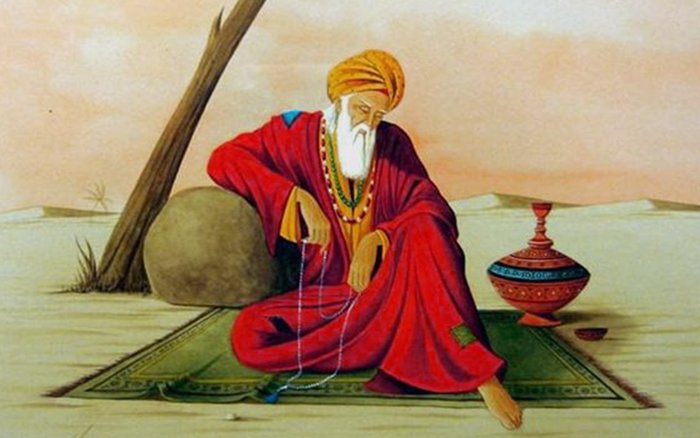
Maulana Jalal-ud-Din Mohammad (1207-1273), popularly known as Rumi, was a Muslim theologian-turned-poet. His poetry, published in two genres of masnavi and ghazal is mainly focused on the idea of love and its relation to the intimacy with God. However, the thoughts of Rumi, expressed through thousands of verses and ghazals, go beyond love and touch upon various aspects of human life and the universe. Even a cursory reading of Rumi’s poetry reveals his wide-ranging and thoughtful expressions on nature, universe, world, anger, lust, justice, purity, etc. According to Ahmed Javed, a contemporary literary critic, Rumi is the best author of human experience in the world. In other words, Rumi best describes the meaning of being a human on planet earth. Alan Williams, professor of Iraninan studies and translator of the works of Rumi, has identified the voice of moral reflection or homily as one of the seven voices while defining the narrative structure of Masnavi, a long poem by Rumi published in 06 volumes. Similar vein of advice and observations on moral psychology can be found in over 3,000 ghazals of Divan or Divan-e- Shams, the collection of ghazals by Rumi. Brittanica, an online encyclopedia, defines moral psychology as “the empirical and conceptual study of moral judgement, motivation and development”. This article details the verses of Rumi, from both Masnavi and Divan, which convey the deep observations of the poet regarding moral psychology. The verses are easily discernible for enduring reliability.
Like other poets, Rumi deploys the tropes of allegory, metaphor, simile, folklore, historical events, personalities, Quranic verses, Hadith etc to make his point. I will present a selection of verses from Rumi’s Masnavi and Divan highlighting the moral psychology therein.
این جہان کوہ است و فعل ما ندا
سوئ ما آید نداہا راصدا
(M I:215)
This world is the mountain, and our action the shout: the echo of the shouts comes (back) to us.
Rumi has explained the recompense for deeds and misdeeds by comparing the whole world to a mountain. Just like the mountain returns the schists by echoing it, the good and bad deeds are accordingly rewarded in this world.
Rumi’s places a lot of emphasis on the importance of thoughts in the life of a human being. He considers that a human being is nothing but a thought itself.
ای برادر تو همان اندیشه ای
ما بقی خود استخوان و ریشه ای
گر گُل است اندیشه ای تو گُلشنی
ور بوُد خاری تو هیمه گُلخنی
Brother! Your worth is in your thoughts alone; you are blood and flesh apart from that
You are rose, if all your thoughts are selfless
If bitter, you are a thorn that is judged worthless
Brother, your worth is in your thoughts alone
M II, 277-278
The formidable effect of a person’s thoughts are highlighted in the above verses. The precursor of every action is a thought. In a sense Rumi is ahead of René Descartes (1596–1650), French philosopher, by three hundred years who affirmed cogito ergo sum ( think therefore I am!). In other words, the ability to think and perceive constituted the most important element of human existence. At many places in both Masnavi and Divan Rumi elucidates how negative thoughts disempower and depress a human being and how he can rise above those thought processes. In the opening verse of Ghazal 2500 of Divan, Rumi diagnosed that the doom and gloom is always characterised by mean thoughts of a man:
چه افسردی در آن گوشه چرا تو هم نمیگردی
مگر تو فکر منحوسی که جز بر غم نمیگرد
Why are you depressed and cornered instead of moving ahead?
But then you are an epitome of mean thought and you are obsessed over grief
In numerous verses, Rumi emphasises the layered and unfathomable inner world of a human being, making it all the more important to avoid judging someone through appearances alone. An example:
َمرد را صد سال عم و خال او
یک سر ُمویی نہ ِبیند حال اُو
A man’s paternal and maternal uncles (may see him) for a hundred years, and of his (inward) state not see (so much as) the tip of a hair (M:3, 4249)
Rumi underlines the complexity of human psyche in that it is characterised by an inner world which is rarely apparent. In other words, he implies that our judgements based on the outward appearances or behaviour of a person may well be wrong considering that appearances never represent the human being on the whole.
Regarding worldly gains and glory, Rumi maintains that on the one hand they uplift and increase a person’s standing among the people but conversely they become the reason of the downfall too as succinctly expressed in the verse below:
دشمنِ طاؤس آمد پر اُو
ای بسی شہ را بکشتہ فر اُو
The peacock’s plumage is its enemy: O many the king who hath been slain by his magnificence!
(M1:208)
Rumi is of the view that by reciprocating a bad deed, one becomes equal to the perpetrator of the act. He, therefore, exhorts restraint or better still good behaviour in response to treatment.
گر فراق بندہ از بد بندھگی است
چون تو با بد بندگی پس فرق چیستHave I deserved my fate for some offence; If you hurt sinners what’s the difference?(M:1,1564)
It can be discerned from the above selection that besides numerous themes in his collection of verses (in Masnavi and Divan) Rumi conveys a message of morality in unmatched eloquence and clarity. Perhaps it is beauty and depth and a sense of wonder in these verses that remain relevant to date and keeps guiding anyone who immerses in the ocean of his wisdom.
About Author
Zameer Abbas
The author is an alumnus of the Institute of Development Studies, UK. He is currently associated with the government of Gilgit-Baltistan and tweets at @zameer_abbas21.
CPEC
Poor Winter Maintenance of KKH Risks CPEC All-Weather Trade
Published
9 months agoon
November 20, 2024By
Imran Ali
The Karakoram Highway (KKH), a vital lifeline for trade between Pakistan and China under the China-Pakistan Economic Corridor (CPEC), faces critical challenges each winter due to negligent maintenance. Connecting the two nations through the Khunjerab Pass—at over 4,693 meters (15,397 feet) above sea level—this strategic route is central to trade and regional economic integration. The pass connects Gilgit-Baltistan with China’s Xinjiang region and was reopened after closing for almost three years in April 2023. The land border was closed in 2020 after the outbreak of COVID-19. However, when heavy snowfalls hit, KKH becomes treacherous, risking the disruption of trade and the economic ties vital to both countries.
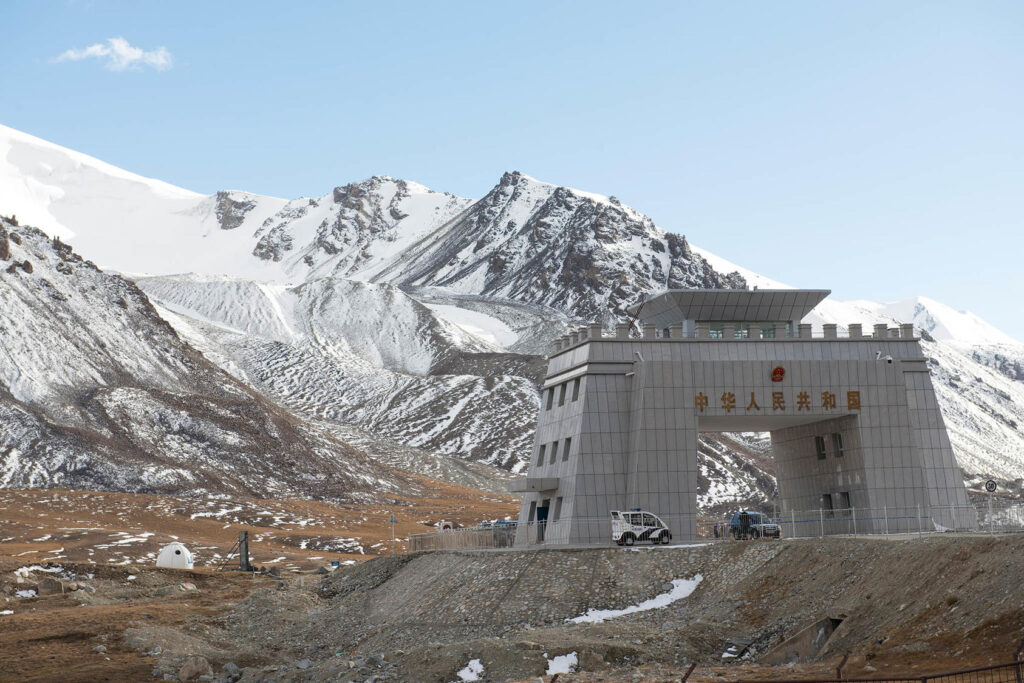
The KKH, a pivotal component of CPEC, facilitates the movement of goods and strengthens economic ties between Pakistan and China. Its year-round functionality is crucial for trade. Yet, the lack of timely snow clearance and road maintenance is disrupting the route, undermining the goals of CPEC.
Despite past agreements aimed at transforming the KKH into an all-weather route, meaningful execution has been lacking. This year, authorities have announced plans to finally implement measures to ensure year-round connectivity. However, the existing state of road maintenance raises doubts about their effectiveness and commitment.

For Aman Ullah, a resident and trader from Gojal, Hunza, the snowbound Karakoram Highway is more than just an inconvenience—it’s a daily struggle that threatens his livelihood. “We are often left stranded for days, with no way to continue our trade,” he shared with The Karakoram.
Aman explained, “A few years ago, the Chinese government donated four state-of-the-art snow-clearing machines to the FWO for winter maintenance of the Khunjerab Border and nearby sections of the KKH. These advanced machines, equipped with computerized systems, were intended to ensure safe travel and uninterrupted trade. However, only one of these machines remains operational today, and even that is reportedly in poor condition. Instead of effectively clearing the snow, it often leaves the road even worse, making travel difficult. The fate of the other three machines remains unknown, raising serious concerns about mismanagement and a lack of accountability.”

The poor state of snow clearing operations has caused a worrying rise in road accidents, Tufail Ahmed, the owner of a transport company whose vehicles frequently travel to China via the KKH, shared his frustrations. Stranded vehicles have become a common sight, with travelers risking their lives in freezing temperatures,” he said.
Abdur Rehman, an import-export trader from Gilgit-Baltistan, highlighted the contrast between the two sides, adding, “In stark contrast, the Chinese side of the Khunjerab Pass ensures the road remains well-maintained and operational during winter. Advanced machinery and a proactive approach demonstrate their commitment to maintaining seamless connectivity. This disparity reflects poorly on Pakistan’s preparedness and raises questions about the efficiency of NHA and FWO.”

Dr. Faqeer Muhammad, Director of the China Study Centre in Gilgit-Baltistan, emphasized the broader implications, stating, “The KKH is more than just a road—it’s a vital trade corridor that plays a key role in China’s Belt and Road Initiative (BRI); it is a symbol of connectivity, trade, and opportunity. Neglecting its maintenance during winter risks undermining Pakistan’s economic and strategic interests, calling for immediate attention from the authorities.” Its maintenance is critical not just for trade but for the broader economic and strategic objectives of CPEC.

This neglect not only puts lives in danger but also hampers trade activities, creating significant bottlenecks for transportation linked to CPEC.
Residents and stakeholders are demanding urgent action to address these issues. Effective utilization of resources, transparent accountability for the missing machinery, and better coordination between authorities are imperative. Maintaining the KKH as a safe and reliable trade route is not just a regional necessity; it is a cornerstone of CPEC and a matter of national importance.
About Author
Imran Ali
The writer is the Founder & CEO of The Karakoram Magazine. Additionally, he is a nuclear scholar fellow at the Centre for Security Strategy and Policy Research (CSSPR) and can be reached at aleee.imran@gmail.com.
Opinion
Gilgit-Baltistan Marks 77th Liberation Day from Dogra Rule
Published
9 months agoon
November 1, 2024By
Imran Ali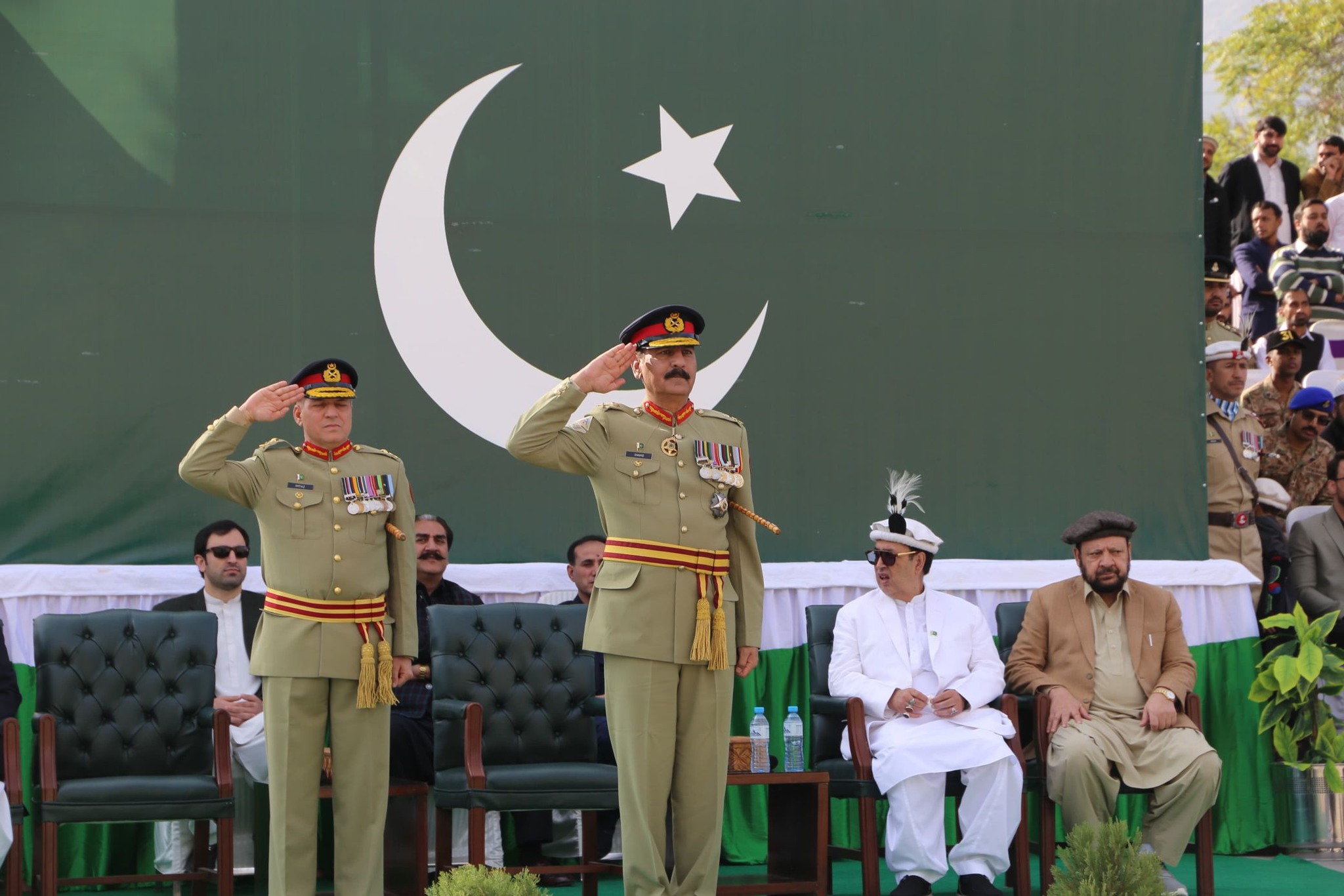
Gilgit-Baltistan enthusiastically celebrated its 77th Liberation Day on November 1st, 2024. A public holiday was declared in all ten districts, and various events were organized to commemorate the occasion.
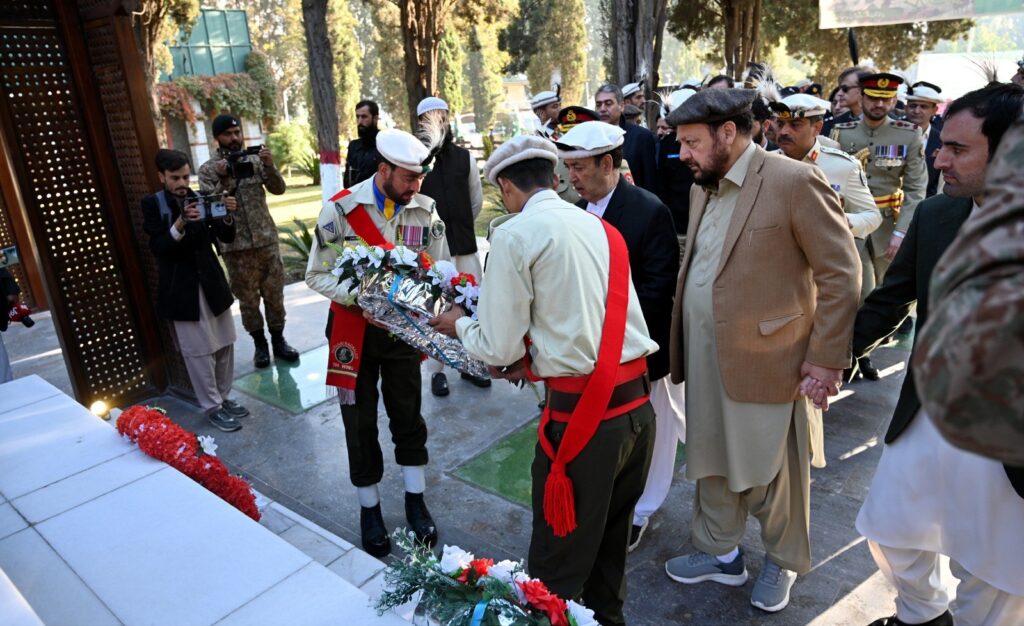
The main event was held at Yadgar Shuhada Chinar Bagh, where Governor Syed Mehdi Shah, Chief Minister Haji Gulbar Khan, and Commander FCNA Major General Syed Imtiaz Hussain Gilani unfurled the national flag. Provincial ministers, the Chief Secretary, the IG Police, and other senior officials also attended the ceremony. Floral tributes were paid to the martyrs, and the armed forces of the GB Police presented a salute.
Governor Syed Mehdi Shah emphasized the sacrifices made by the Gilgit-Baltistan Scouts, the region’s forefathers to liberate it from Dogra rule. He also acknowledged the sacrifices of the martyrs and reaffirmed the commitment to national security.
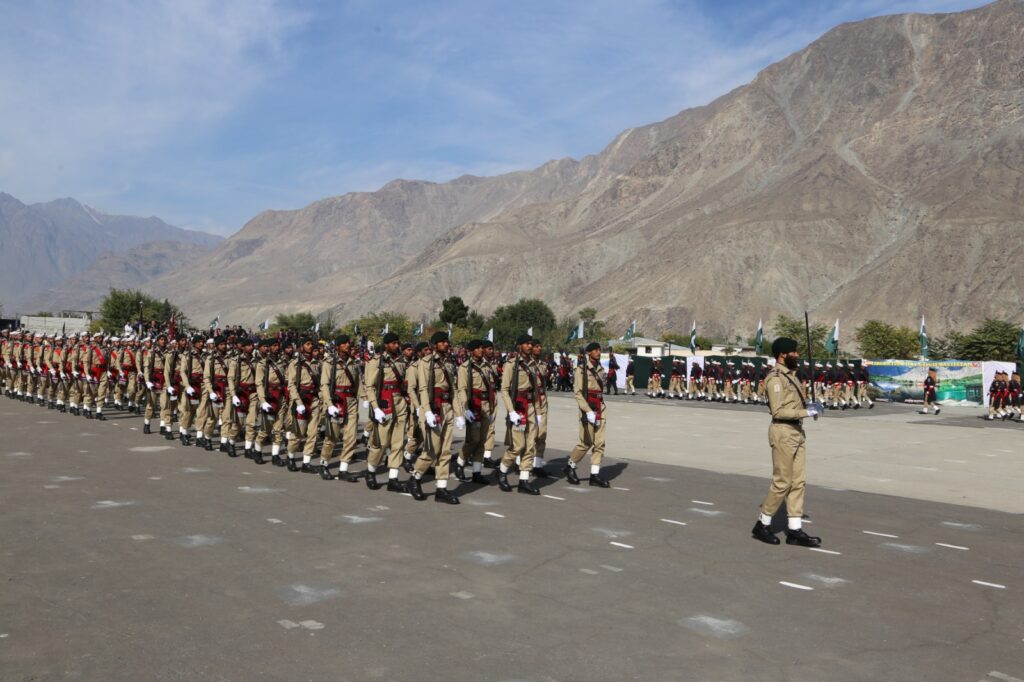
A special Independence Day ceremony was organized at the Army Helipad, where high-ranking civil and military officials participated. For the first time in Gilgit-Baltistan’s history, the 77th Independence Day Parade was telecast live on national channels, including Gilgit-Baltistan PTV. Many people viewed the parade live at Wahab Shaheed Ground and Lalak Jan Shaheed Ground.
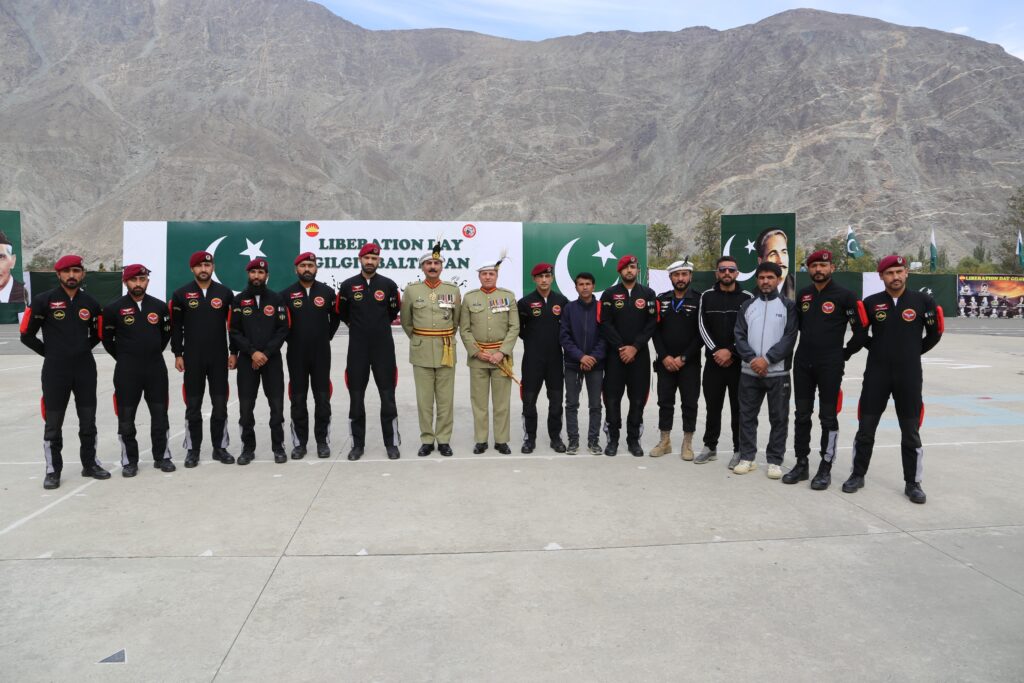
Commander 10 Corps Lieutenant General Shahid Imtiaz highlighted the significance of Gilgit-Baltistan’s freedom, achieved through the courage and sacrifice of its people. He emphasized the region’s enduring loyalty to Pakistan.

Chief Minister Haji Gulbar Khan paid tribute to the region’s martyrs and expressed pride in the people of Gilgit-Baltistan. He also acknowledged the pivotal role played by the Gilgit-Baltistan Scouts, a force with a rich history dating back to the British Raj. Their courage and sacrifice were instrumental in securing the region’s freedom from Dogra rule. Alongside the local populace, the Scouts fought valiantly against the Dogra forces and ultimately achieved victory.
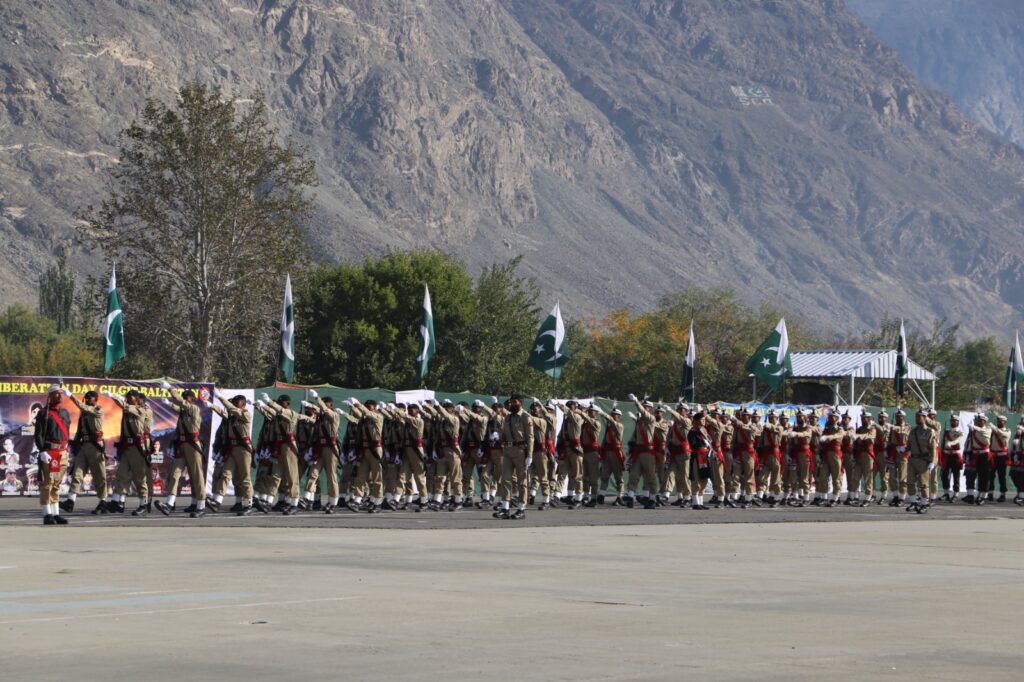
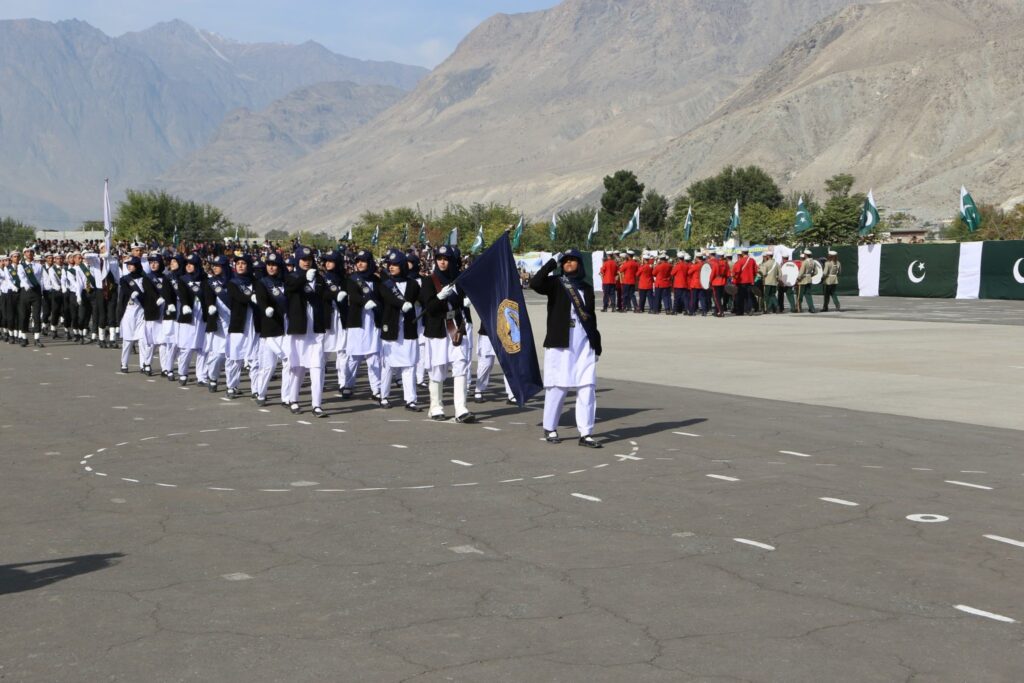
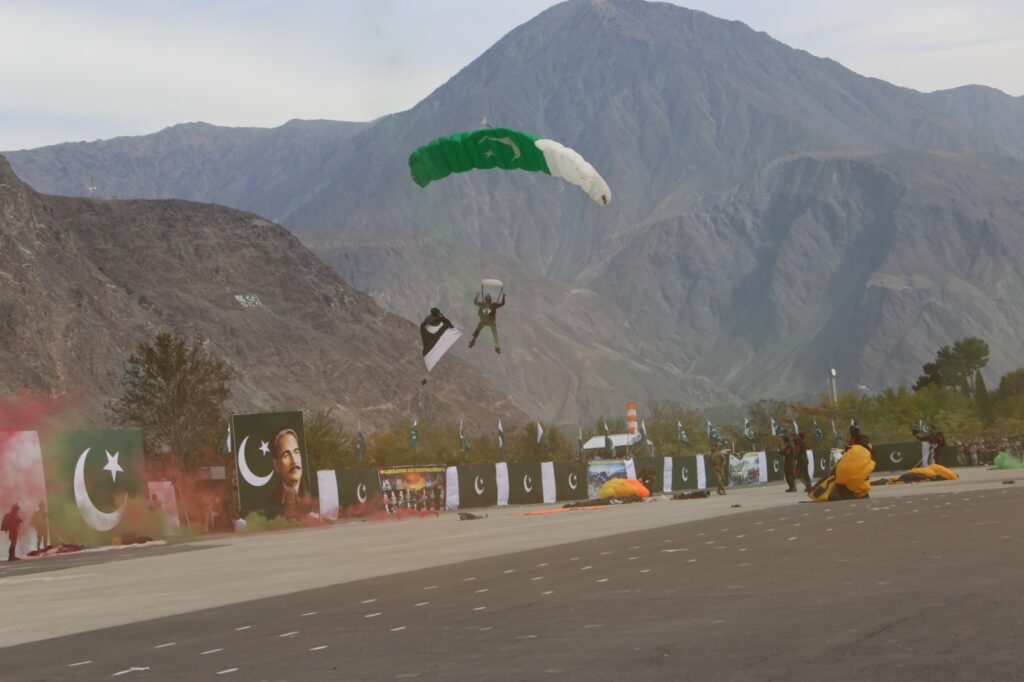
The Independence Day Parade featured troops from the NLI Center, GB Scouts, Women Police, GB Police, Punjab Rangers, Cadet College Skardu, and Cadet College Chilas. The celebrations also included paragliding performances and cultural programs, featuring national and regional patriotic songs as well as local dances.
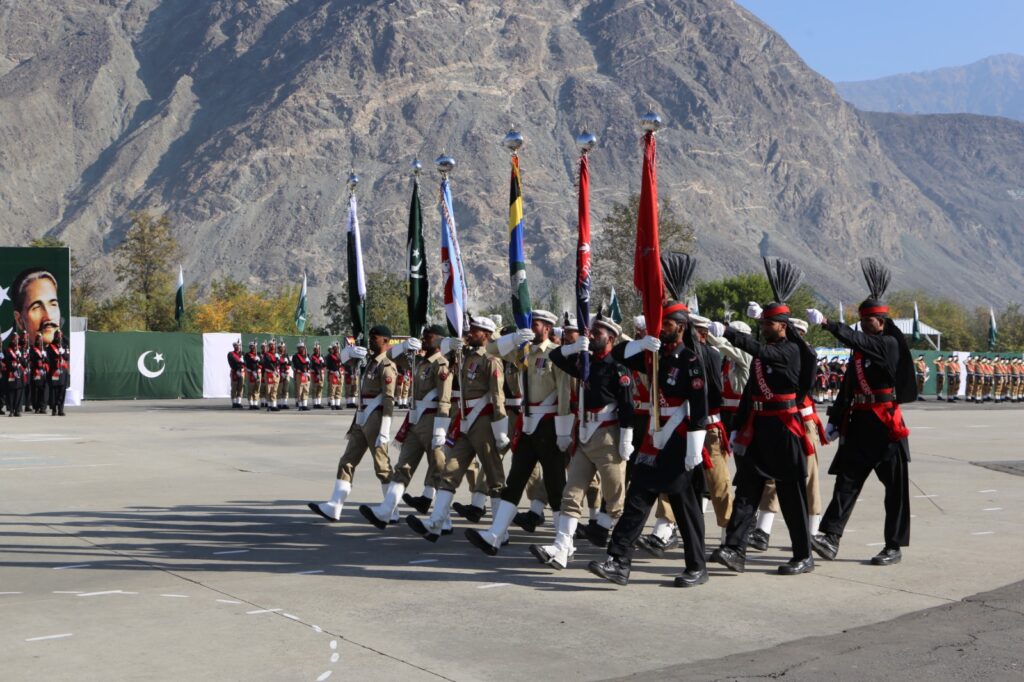
Similar celebrations were held in all districts of Gilgit-Baltistan, with cultural programs, flag hoisting ceremonies, and tributes to martyrs. The Pakistan Army played a significant role in organizing these events and broadcasting special programs.

As Gilgit-Baltistan commemorates its 77th Liberation Day, it reaffirms its commitment to national unity and prosperity. The region’s rich history, diverse culture, and stunning natural beauty continue to attract visitors from around the world. With its strategic location and abundant resources, Gilgit-Baltistan is poised to play a vital role in Pakistan’s development and progress.
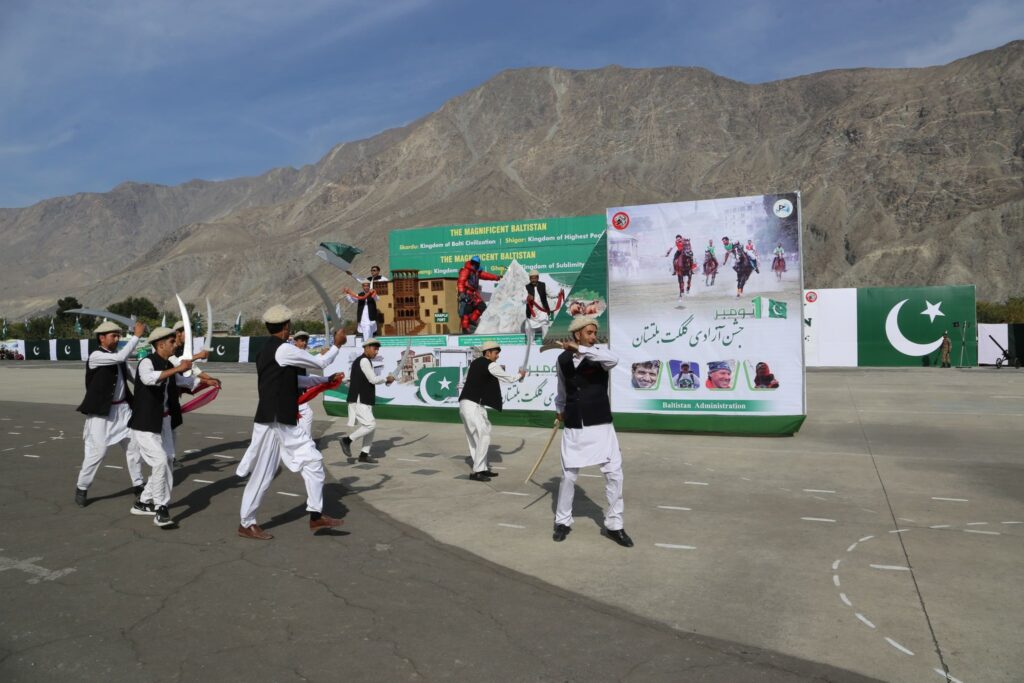
About Author
Imran Ali
The writer is the Founder & CEO of The Karakoram Magazine. Additionally, he is a nuclear scholar fellow at the Centre for Security Strategy and Policy Research (CSSPR) and can be reached at aleee.imran@gmail.com.

Clean Gilgit-Baltistan Project by Nestlé Pakistan Reaches Askole – Zero Point to K2

Rumi, the Moral Psychologist

Poor Winter Maintenance of KKH Risks CPEC All-Weather Trade
Latest
-

 Tourism2 years ago
Tourism2 years ago15 Best Places to Visit in Skardu
-

 Arts, Culture & Heritage2 years ago
Arts, Culture & Heritage2 years agoTraditional women’s dresses of Gilgit-Baltistan
-

 Tourism2 years ago
Tourism2 years agoThe Ultimate Travel Guide to Gilgit-Baltistan: Land of the Mighty Mountains
-

 KIU Corner2 years ago
KIU Corner2 years agoA Guide to LMS KIU Student Login – KIU
-

 Current Affairs2 years ago
Current Affairs2 years agoStrategic Importance of the Wakhan Corridor
-
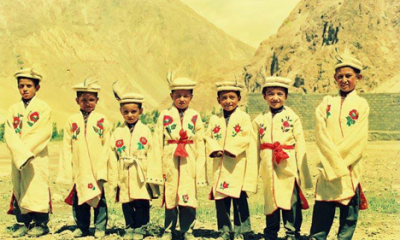
 Arts, Culture & Heritage2 years ago
Arts, Culture & Heritage2 years agoShuqa Simple but amazing winter clothing of Gilgit-Baltistan
-

 KIU Corner2 years ago
KIU Corner2 years agoEmbracing Challenges: Gul Rukhsar’s Remarkable Journey
-
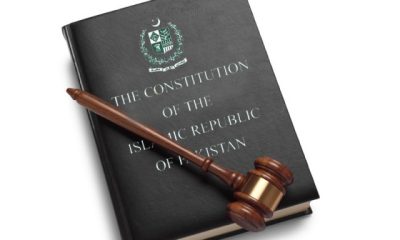
 Opinion2 years ago
Opinion2 years agoThe Constitution of Pakistan: 50 Years of History, Significance, and Challenges



דירות דיסקרטיות בבאר דשבע
November 8, 2023 at 9:20 pm
I was extremely pleased to discover this site. I wanted to thank you for your time just for this wonderful read!! I definitely enjoyed every bit of it and i also have you saved as a favorite to look at new stuff on your blog.